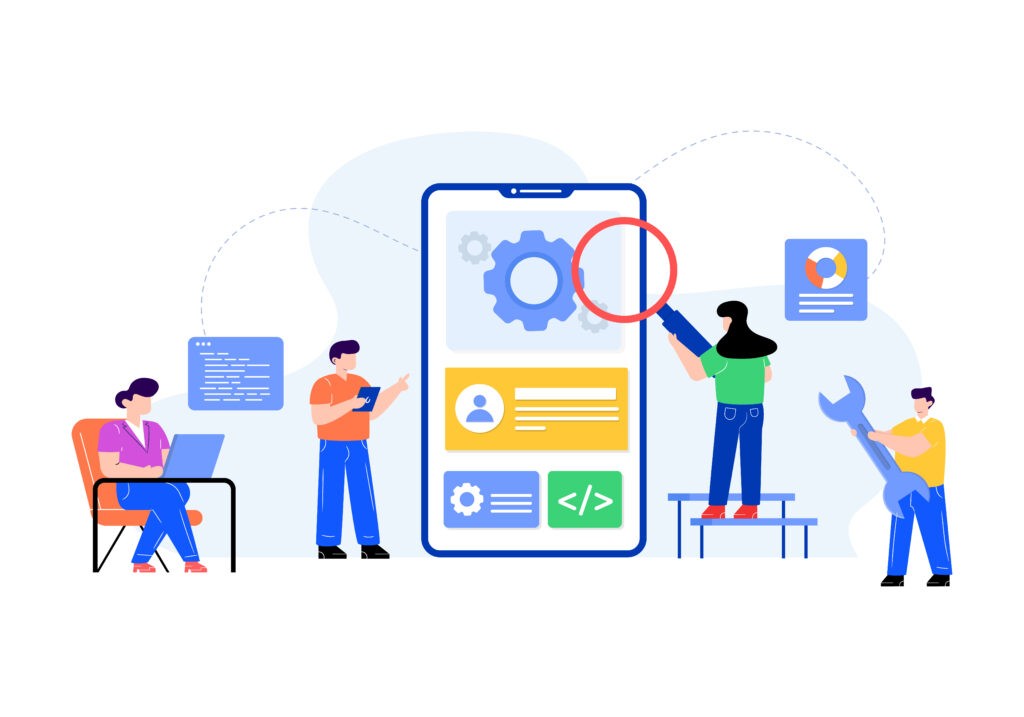You’re in control of your e-commerce website’s success, and one of the key factors to achieve that success is providing an exceptional user experience. To ensure your visitors have a smooth and enjoyable journey while exploring and purchasing from your online store, usability testing is essential. In this article, we’ll dive into the world of usability testing examples, exploring the strategies and methods that have proven to work in enhancing the user experience, as well as those that have fallen short. By understanding these examples, you’ll be equipped with actionable insights to optimize your e-commerce platform and keep your customers coming back for more.
But how do you know which usability testing techniques will work for your specific e-commerce website? Fear not, as we’ve gathered various examples from both successful and unsuccessful usability testing strategies to guide you in making informed decisions.
We’ll examine the benefits of usability testing, common methods for improving user experience, and lessons learned from the triumphs and failures of others in the e-commerce realm. So, sit back, take charge, and let’s learn how to make your e-commerce website the best it can be.
Benefits of Usability Testing for E-Commerce Websites
By conducting usability testing on your e-commerce site, you’ll quickly identify pain points, streamline the shopping experience, and ultimately boost your sales and customer satisfaction.
With the ever-growing competition in the online retail space, it’s crucial to stand out by providing a seamless and enjoyable user experience for your customers. Usability testing allows you to pinpoint areas of improvement and adjust your website accordingly, giving you the edge over your competitors.
One major advantage of usability testing is the actionable insights you’ll gain from observing real users interacting with your e-commerce site. By watching users navigate your website, you’ll uncover any issues that may be hindering their shopping experiences, such as confusing navigation, slow page load times, or unclear product descriptions.
These insights will enable you to make data-driven decisions and prioritize improvements that will have the biggest impact on your customers’ satisfaction and your bottom line.
Not only will usability testing help you improve your website’s overall performance, but it will also foster a sense of trust and loyalty among your customers. When users feel that their needs and preferences are being taken into account, they’re more likely to return to your site and recommend it to others.
By continuously refining your e-commerce site based on usability testing, you’ll create a more enjoyable shopping experience that keeps customers coming back for more, ultimately leading to increased sales and a thriving online business.
Successful Usability Testing Strategies for E-Commerce
You’ll be amazed at how effective certain strategies can be in enhancing your online store’s user experience and ultimately boosting sales. Utilizing successful usability testing strategies for your e-commerce website not only ensures a smooth and seamless shopping experience for your customers but also gives you valuable insights into what works and what doesn’t. By adopting a data-driven approach and continuously refining your website based on user feedback and behavior, you can significantly increase conversion rates and customer satisfaction.
One highly effective usability testing strategy is to implement A/B testing on your website. This involves creating two different versions of a webpage or element, such as a call-to-action button or product image, and then measuring which version performs better in terms of conversions and user engagement. By analyzing the data from these tests, you can make informed decisions about which design elements and features resonate with your customers and optimize your site accordingly.
Another successful strategy is to conduct moderated or unmoderated user testing sessions, where you observe how real people interact with your website. This can provide invaluable insights into potential pain points and areas for improvement, allowing you to make targeted changes and enhancements to your site.
Don’t underestimate the power of qualitative feedback from your customers, either. Encourage users to provide feedback on their shopping experience, whether through surveys, reviews, or direct communication. By actively listening to their concerns and suggestions, you can identify common issues that may be hindering your site’s usability and address them accordingly.
Remember, the ultimate goal of usability testing is to create an e-commerce website that meets the needs and expectations of your customers, so their input should be at the heart of your testing and optimization efforts.
Failed Usability Testing Strategies in E-Commerce
It’s heartbreaking to see countless online stores suffer due to failed strategies in assessing their website’s user experience. Despite the best intentions, sometimes e-commerce businesses fall prey to common pitfalls in usability testing that lead to subpar results and hindered growth.
By understanding these mistakes and how to avoid them, you can take control of your website’s performance and optimize the user experience for higher conversions and customer satisfaction.
One major blunder is focusing solely on quantitative data without considering qualitative insights. While numbers and statistics are important, they don’t always paint the full picture of user behavior and preferences. By complementing quantitative data with qualitative research, such as user interviews and surveys, you can gain a deeper understanding of your customer’s motivations, pain points, and preferences. This will empower you to make more informed decisions and create a seamless shopping experience tailored to your target audience.
Another common mistake is testing with an insufficient or unrepresentative sample size. To ensure your findings are accurate and reliable, it’s crucial to conduct tests with a diverse range of participants who accurately represent your user base. This will give you a comprehensive view of the various needs and preferences of your customers, allowing you to make informed improvements to your website.
Lastly, don’t fall into the trap of prioritizing aesthetics over functionality. While a visually appealing website is important, it’s crucial not to sacrifice usability for the sake of design. Your customers should be able to navigate your site with ease, find what they’re looking for quickly, and complete their purchase without any hiccups.
By avoiding these common pitfalls and focusing on a holistic approach to usability testing, you can take charge of your website’s performance and create an e-commerce experience that delights your customers and drives results.
Lessons Learned from Successful and Unsuccessful Usability Testing in E-Commerce
Analyzing both triumphs and failures in e-commerce usability evaluations can offer valuable insights, allowing businesses to refine their strategies and create a more enjoyable shopping experience for their customers. By learning from the successes of others, you can implement proven strategies that have increased user satisfaction and conversion rates.
On the other hand, understanding the reasons behind ineffective usability testing methods can help you avoid costly mistakes and ensure that you’re not wasting your time and resources on unproductive approaches.
One of the key lessons learned from successful usability testing in e-commerce is the importance of testing early and often in the development process. By conducting usability tests at various stages of your website’s design and development, you can identify and address issues before they become major roadblocks to user satisfaction. This proactive approach not only saves time and resources but also helps you build a more user-centric website that meets the needs of your target audience.
Additionally, leveraging data-driven insights to make informed decisions about design and functionality is crucial to creating a seamless and enjoyable shopping experience for your customers. For instance, monitoring key performance indicators such as bounce rate, average time on site, and conversion rates can help you identify areas that need improvement and make data-backed decisions to enhance your website’s usability.
On the flip side, one of the most common pitfalls in unsuccessful usability testing is focusing too much on quantitative data and overlooking the qualitative feedback from users. While numbers are important, they don’t always provide the full context needed to understand user behavior and preferences.
By incorporating user feedback and observations into your usability testing process, you can uncover valuable insights that may not have been apparent through quantitative data alone. Additionally, it’s essential to avoid making assumptions about user behavior and preferences, as these can lead to biased test results and misguided design decisions.
Instead, approach usability testing with an open mind, valuing your customers’ input and feedback, and continuously iterating on your website’s design and functionality to better meet their needs and desires.
Frequently Asked Questions
How much time and resources should be allocated for usability testing in an e-commerce project?
Allocate ample time and resources for usability testing in your e-commerce project. It’s crucial for optimizing user experience, boosting conversions, and staying ahead of competitors. Adjust based on your project’s complexity and goals.
Are there any specific usability testing tools and platforms recommended for e-commerce websites?
Absolutely! For your e-commerce site, consider using usability testing tools like Hotjar, Optimizely, and UserTesting. These platforms provide actionable insights, heatmaps, and real user feedback to optimize your website’s user experience.
How can we ensure the usability testing process remains unbiased and provides accurate results?
To ensure unbiased, accurate usability testing results, carefully select diverse participants, establish clear testing guidelines, and utilize quantitative data. Analyze patterns, spot outliers, and make data-driven improvements for a seamless e-commerce experience.
How can we measure the ROI (return on investment) of usability testing for an e-commerce website?
To measure the ROI of usability testing for your e-commerce website, track key metrics like conversion rates, average order value, and bounce rates. Compare these data points before and after testing to gauge improvements.
What are some common challenges faced during usability testing for e-commerce and how can they be overcome?
Overcoming e-commerce usability testing challenges involves addressing unclear goals, recruiting diverse users, and streamlining test processes. Set specific objectives, engage varied user demographics, and optimize testing methods for valuable insights and greater control.
Conclusion
So, you’ve seen the impact of usability testing in the world of e-commerce. With the right strategies, it’s possible to improve your user experience and boost your sales significantly.
Don’t forget to learn from both successful and failed examples to ensure your own success. Remember, it’s all about understanding your customers’ needs and making data-driven decisions.
Keep your users at the heart of your design process, and you’ll be well on your way to creating a winning e-commerce experience.


